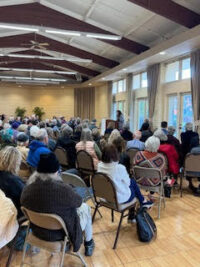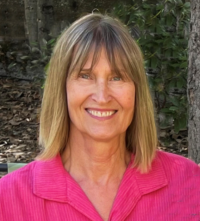The Sonoma City Planning Commission at its July 12 meeting had a two-hour study session regarding environmental impact outlined in a sustainability status report on infrastructure improvements, water, wastewater and greenhouse gases.
This report is associated with an update for the city council and the “2020 General Plan.”
Evaluating potential impacts and sustainable practices, the status report, as required by law, keeps the planning commission current on environmentally related issues encompassed within the “Sphere of Influence” and the maximum level of development within the Land Use Plan. The status report reveals that with the constant water conservation concept now in progress – there will be no need for fear or panic over our current water situation. City Planner, David Goodison told the commission that the city is growing below the rate allowed in the Growth Management Ordinance (GMO) implemented in 1980 – although water demand projections assume the city will continue its GMO regulation of conservation.
“Conservation is the key strategy,” water specialist John Nelson said on behalf of the city. “And it’s money in the bank for you.”
With the city in 100 percent compliance with the California Urban Water Conservation Council’s recommendations for Best Management Practices – 13 percent or 442 acre feet of the projected demand is expected to be saved. In contrast, declaring that his well is significantly below normal, Commissioner Michael George did not agree with the scientific evidence presented to the commission. George provided the commission with his own alternative research, contending: “It is very likely that by 2025 the state will be in a condition of continual drought,” George said. “If so, more than half of the current population will need to migrate either into northern California or east of the Rocky Mountains.” George said that this part of the world had twice experienced 200-year droughts (between 800 and 1350 AD). In an effort to reach his own rational determination, Commissioner Tom Anderson asked city planner Goodison: “Although I hear this new anecdotal evidence presented to the commission, are there any scientific methods that you know of used to measure all of the ground water in Sonoma County?” Following the negative response from Goodison, Anderson said that he has a 45-foot well located less than a mile from the center of town and that for nearly 40 years it has operated just fine.
Echoing Anderson, Planning Commission Chairman Raymund Gallian was not swayed by the scare tactics approach. “The trend is good in water conservation,” Gallian said. “I don’t want to use the fear of water as a restriction from this commission.” As directed by the city council, the “concept of sustainability” should be integral within the general plan, which anchors resource conservation and development management practices for future generations ensuring that: (a) Renewable resources such as groundwater, soil and fish are not used faster than they can regenerate; (b) Non-renewable resources such as minerals and fossil fuels are not consumed faster than renewable alternatives can be substituted for them; (c) Pollution and waste are not emitted faster or in greater volumes than natural systems can absorb, recycle, or render them harmless.
Planning commission has sustainability study session
More from What's HappeningMore posts in What's Happening »
- Creative Sonoma Announces #TeachTheArts Campaign to Boost Local Teaching Workforce
- The Living Legacy of Mac McQuown
- “Community Call to Action Town Hall” Draws Concerned Residents
- Sonoma Youth Receive American FFA Degrees
- Margaret Hatcher Named 2025 Treasure Artist
- Tenant Rights Town Hall to be held in Sonoma Valley – Dec. 4






